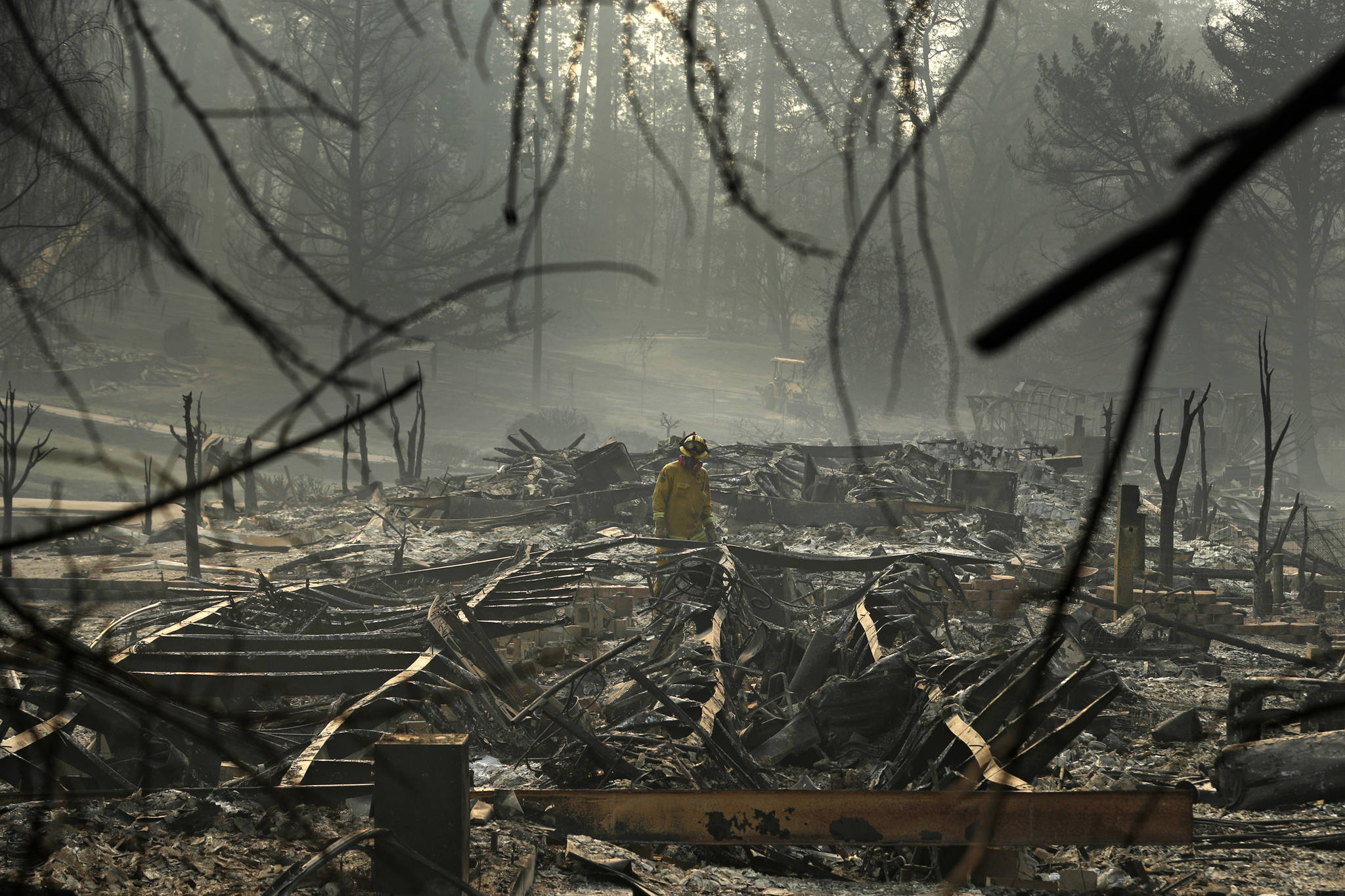The recent earthquake was reported to be located 30 miles under the surface in the subduction zone where the Pacific Plate is going under the North American Plate. The groups that support leaving fossil fuels in the ground to fight climate change and rising sea levels, must not know about isostatic glacial rebound, subduction zones, oil seeps, wildfires, volcanic eruptions involving fossil fuels, or the process of photosynthesis.
Photosynthesis is the process where plants turn water and CO2 into plant sugars by trapping ultraviolet rays of sunshine in a molecule of carbon, hydrogen and oxygen called cellulose. This molecule is used in every cell in the plant. When the plant burns, the ultraviolet rays are released as heat and the carbohydrates are broken down into water vapor and CO2 and released back into the atmosphere. If the plant is not burned the leaves fall off and become soil. Some of these organics end up in the oceans as sediment.
Once in the ocean the organics mix with ocean sediments and then they all end up going into the subduction zones and this pulls them deep into the earth. This is where the extreme pressure and heat renders the organics into very hot oily liquids that melt their way back toward the surface. This liquid squeezes up through cracks in the crust and cools down and becomes reserves of crude oil. The BP gulf oil spill happened because the crude oil was still too hot and it melted their equipment causing the accident. While BP spent 40 billion dollars cleaning up its spill, natural seeps of crude oil and methane gas spill every day. These seeps kill thousands of sea birds each year and an unmeasurable amount of methane escapes into the atmosphere as a greenhouse gas. Actually, the only way to safely and effectively recycle fossil fuels is to burn it.
Fortunately, with modern technology we are able to harvest fossil fuels and clean some of the pollutants out before they are burned. When volcanoes burn fossil fuels, all of the pollutants are also released into the atmosphere. The more gases that are involved, the bigger and more devastating the eruption. This is why we can stop burning oil but we cannot stop them from being burned.
If the forest is a so-called “carbon bank” then wildfires are carbon thieves. The U.S. Geological Survey just released numbers showing the 2018 California wildfires released as much CO2 as a full year of power production for the whole state of 40 million people. While 2018 was a record year for wildfires in California it barely approaches the average acreage burned in Alaska each year. Obviously, being able to stop wildfires could reduce CO2 more than the experts have predicted necessary to slow climate change.
If the forest is to be used to fight climate change, they need to be managed as a carbon factory, not a bank. That means access is critical. Wildfires are not the only carbon robbers. Bugs, windstorms, droughts and diseases have prevented millions of acres of forest from capturing CO2.
This is why the Roadless Rule is so damaging. Just because we build access does not mean the forest must be clear cut, but it does mean the forest can be managed. Then when disasters happen, harvesting the carbon and turning the wood into homes and other products is truly putting the carbon in the bank.
Isostatic glacial rebound has been in the news here in Juneau recently, but it also is part of our distant past. It has been suggested that the original Alaskans crossed a land bridge from Siberia. If the current rate of rebound continues, it may once again surface. It is because of this rebound that we can summarize that the Pacific Plate is subsiding which might allow for the ice melting without rising sea levels. Islands attached to the Pacific Plate will have problems and this is where we should focus our attention and make appropriate preparations.
So, if the governor is to speak out about climate change, we hope that he will be open to the possibility that there are better ways to combat climate change than to stop burning fossil fuels.
• Steve and Cindy Bowhay are a married couple living in Juneau. They are known conservationists who own the Glacier Gardens family of businesses. They also own River Recycler Systems, a research and development company focused on freshwater. My Turns and Letters to the Editor represent the view of the author, not the view of the Juneau Empire.

